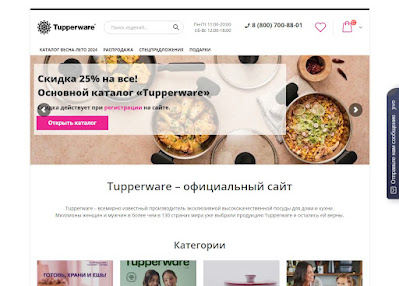by David Barnett and Richard Ferguson
Introduction
In mid-September 2024, US-based homeware brand Tupperware - known for their plastic food-container products, traditionally sold through home parties similarly to the model used by make-up brand Avon - filed for bankruptcy. The corporation had previously attempted to remain in operation despite debts of over $700 million, following macroeconomic changes, increased product competition, and a growth in consumer preference for non-plastic alternatives[1,2,3].
The Tupperware brand, first developed by Earl Tupper in the US, is a wholly owned subsidiary of Tupperware Brands. Many of the brand's official domains are registered in the name of Dart Industries, a former name of the brand owner.
In this article, and in light of any potential sale or IP purchase which may occur in the future, we consider the landscape of domains with names containing the 'tupperware' mark, based on zone-file searches (where available).
Domain landscape
The searches reveal 1,130 domains with names containing 'tupperware'. Of these, (at least) 235 appear to be under official ownership (i.e. part of the legitimate brand portfolio), based on analysis of their whois records. The official portfolio includes at least 40 domains with names of the form 'tupperware.[TLD]' (where TLD is a top-level domain, or domain extension - i.e. 'exact-match' names) and a significant number of registrations of the form 'tupperware(-)[country].[TLD]'.
The remainder of the dataset (895 domains, or 79% of the total) are probably or possibly under third-party ownership (although some share similarity in naming patterns with known official domains, but could not have ownership definitively verified via an automated whois look-up).
Of the 895 probable or possible third-party domains:
- 375 (42%) have active MX records, indicating that they have been configured to be able to send and receive e-mails and - if not official - could be associated with fraudulent or phishing activity.
- 392 (44%) resolve to some sort of live website content (i.e. generate an HTTP response code of 200) and, of these, 289 feature at least one of the high-concern keywords 'login', 'shop' or 'store' somewhere on the site.
- Amongst the top twenty most commonly appearing host-countries within the dataset, a number of high-risk countries, or regions more commonly associated with infringements, are featured, including Russia (36 domains), Ukraine (6), British Virgin Islands (5), Korea (5), and Kazakhstan (4).
- The list of most common TLDs also includes a number of new-gTLDs or other extensions which are disproportionately more commonly associated with infringing activity[4], including .ru (43), .shop (34), .online (25), .store (20), .site (11) and .top (10).
Amongst the domains resolving to live websites, a range of content types are present. Some of these are currently low-threat (such as placeholder pages, or sites promoting personal Tupperware parties), but many are of greater concern, including large numbers of e-commerce sites incorporating use of official Tupperware branding (Figures 1 and 2).
Figure 1: Examples of apparently unofficial e-commerce sites utilising Tupperware branding and hosted on branded domain names
Figure 2: Examples of other sites of potential concern: (top) potential fraud / phishing - purporting to be recruiting for Tupperware consultants; (middle) misdirection - re-direction to a third-party e-commerce site; (bottom) misdirection - brand association with undesirable content
This mixed use is interesting because it shows that the brand is being targeted not just for phishing or inappropriate content, but also trademark infringement, which in turn may be driving genericism of the Tupperware term.
Enforcement landscape
It is clear from the above findings that, as a long-standing, well-known and popular brand, Tupperware has found itself targeted by infringers. The analysis of the domain landscape shows that the brand owner has compiled a comprehensive portfolio of official domains but, as has been noted previously[5,6], such an initiative must always be accompanied by a programme of brand protection (including both monitoring and enforcement) to address third-party activity outside the set of official names.
Tupperware does have some history of successful domain-name disputes; information provided on UDRPSearch.com shows that, over the last 18 years, there have been a range of relevant cases, all but one relating to 'tupperware'-specific domain names:
- Dart Industries Inc. v. Leslie Rubin (D2006-0146) (re tupperwarebrandscorporation[.]com and tupperwarebrands[.]com) - domain transferred 14-Apr-2006
- DART INDUSTRIES INC v. 向利香 (CN-1200634) (re cs-tupperware[.]com) - domain transferred 25-Jan-2013
- DART INDUSTRIES INC, Tupperware (China) Co., Ltd v. jiebo Lu (CN-1300646) (re tebaihui[.]cc) - domain transferred 19-Mar-2013
- Dart Industries Inc. v. REDACTED FOR PRIVACY (1874844) (re tupperware[.]luxe) - domain suspended 30-Dec-2019
- Dart Industries Inc. v. See PrivacyGuardian.org (1880646) (re tupperware[.]monster) - domain suspended 12-Feb-2020
- Dart Industries, Inc. v. Jun Ying Cao (1881341) (re rosatupperware[.]icu) - domain suspended 18-Feb-2020
- Dart Industries Inc. v. Onur Ozenli (D2021-0144) (re tupperwareturkiye[.]xyz and tupperwareturkiye[.]com) - domain transferred 25-Mar-2021
It appears from the above list that there has been a push in more recent times to address the use of the Tupperware mark in domain names. However, this may be too little, too late. Also, domain name complaints alone are insufficient to address infringement issues for any brand.
Final thoughts
A brand protection programme that monitors and takes regular action against domains, websites, marketplaces and social media is required as a first line of defence in ensuring that a brand such as Tupperware does not face genericide. First-to-market and market leaders would do well to take note of Tupperware's salutary tale. Without brand protection, brand value is diminished, and with it the pull of a company to attract consumers. It remains to be seen if the case of Tupperware is a self-contained issue.
References
[1] https://www.independent.co.uk/news/business/news/tupperware-bankrupt-debt-container-b2614773.html
[2] https://www.bbc.co.uk/news/articles/c4gdprv2ddxo
[4] https://circleid.com/posts/20230117-the-highest-threat-tlds-part-2
This article was first published on 8 October 2024 at:
https://www.iamstobbs.com/opinion/no-party-ip-associated-with-the-fallen-tupperware-brand









No comments:
Post a Comment